PsychNewsDaily Publishers
100 Summit Drive
Burlington, MA, 01803
Telephone: (320) 349-2484
PsychNewsDaily Publishers
100 Summit Drive
Burlington, MA, 01803
Telephone: (320) 349-2484
Caring for senior cats requires attention to their changing needs, including regular vet check-ups, specialized diets, comfortable environments, and consistent routines to enhance their quality of life.
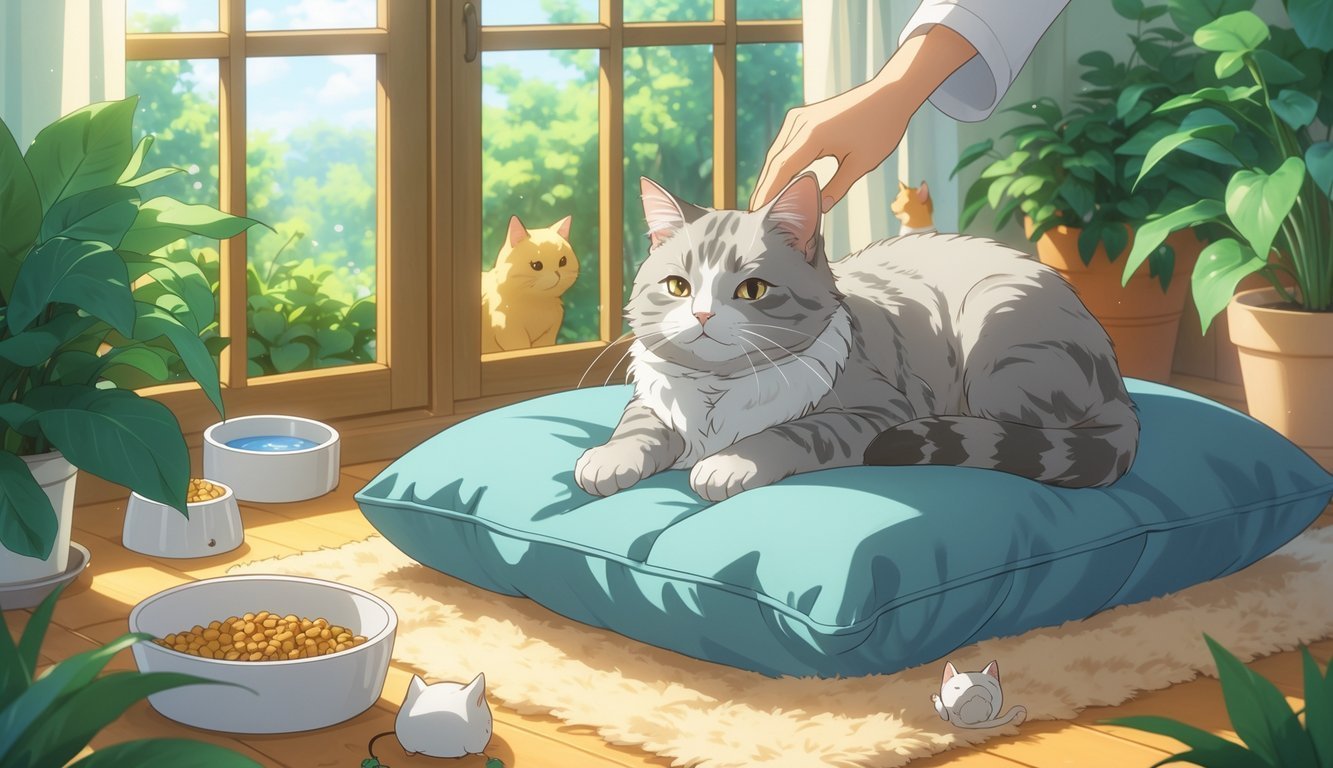
Caring for a cat in their later years takes a bit more attention, but honestly, it’s worth it. As cats age, their needs shift, and even small tweaks in daily care can help them stay healthy and comfortable longer.
With some thoughtful habits, you can give your senior cat more good years—supporting their health and making life a little easier for them.
You’ll pick up ways to stay ahead of common age-related changes, from regular vet visits to simple home tweaks that keep your cat comfy. This guide shares practical tips for maintaining both physical health and emotional well-being, so your cat can enjoy their golden years right by your side.
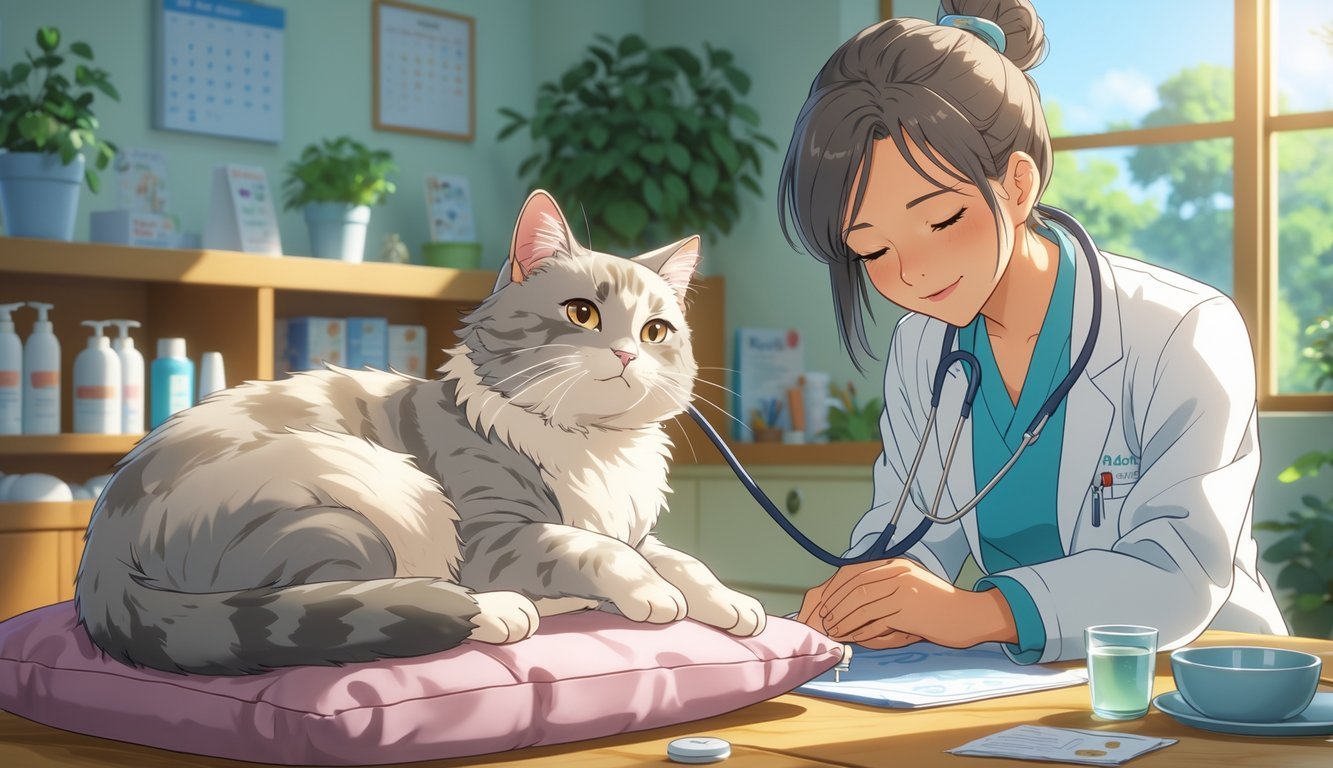
When your cat gets older, regular vet visits matter more than ever. Most vets suggest seeing your senior cat every six months instead of just once a year.
These check-ups help spot small health changes before they turn into bigger problems. During a visit, your vet checks your cat’s weight, teeth, heart, and overall condition.
They might recommend blood work or other tests to catch issues like kidney disease, thyroid trouble, or arthritis. Cats hide pain or illness really well, so even if your cat seems fine, the vet can catch early warning signs you’d probably miss.
Sticking to twice-yearly visits gives your cat a better shot at staying comfortable and healthy as they age. These appointments also let you ask about diet, behavior, or any changes you’ve noticed.
Making vet visits a regular thing shows your senior cat just how much you care.
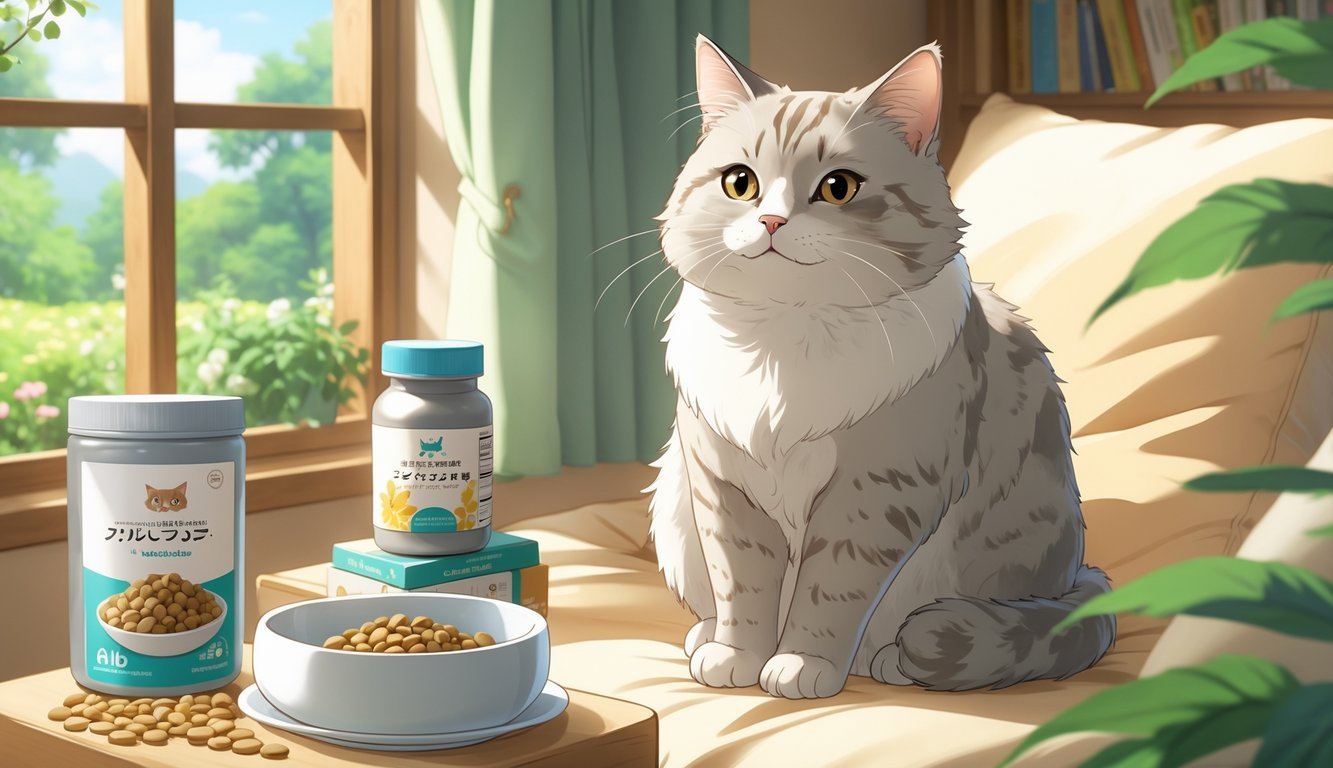
Older cats need different nutrition, plain and simple. Senior cat foods support joint health, help keep weight in check, and offer the right balance of protein and nutrients.
Brands like Hill’s Science Diet Adult 11+ focus on aging cats’ needs. These foods often contain ingredients that support kidney and digestive health, which get more important as cats get up there in years.
You’ll want to think about switching your cat’s food around age seven, since that’s when many cats start entering the senior stage. Make the switch gradually to avoid tummy troubles and give your cat time to get used to the new food.
Senior diets can help with issues like obesity or muscle loss. Feeding a formula made for older cats gives your pet the nutrition they need to stay active and comfortable.
Ask your vet for advice on which senior formula fits your cat’s needs best. It’s always worth getting a second opinion.
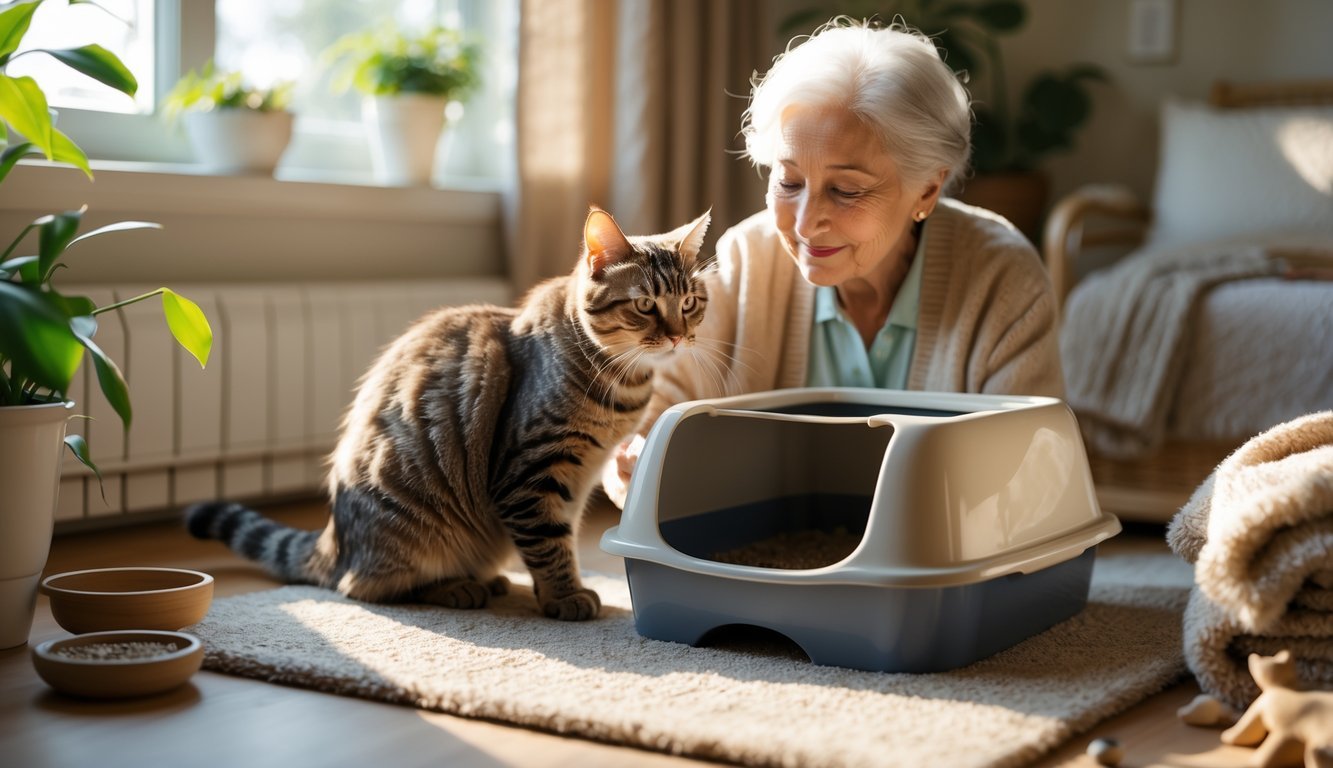
Older cats often struggle to climb into tall litter boxes. Arthritis, stiff joints, or just a bit less flexibility can make high sides a real hassle.
A low-sided litter box lets your cat get in and out without pain or struggle. You’ll probably notice your cat prefers a box with a wide, simple opening—makes sense, right?
That kind of box is easier for them to step into, even if they’re moving slower these days. It can also help cut down on accidents outside the box.
Some low-sided boxes include ramps or gentle slopes. If your cat has more serious mobility issues, these features can really help.
Making the box easier to use encourages your cat to keep up good bathroom habits. Placement matters too.
Put the litter box somewhere quiet and easy to reach. No stairs or long walks needed. A comfortable setup just makes life smoother for everyone.
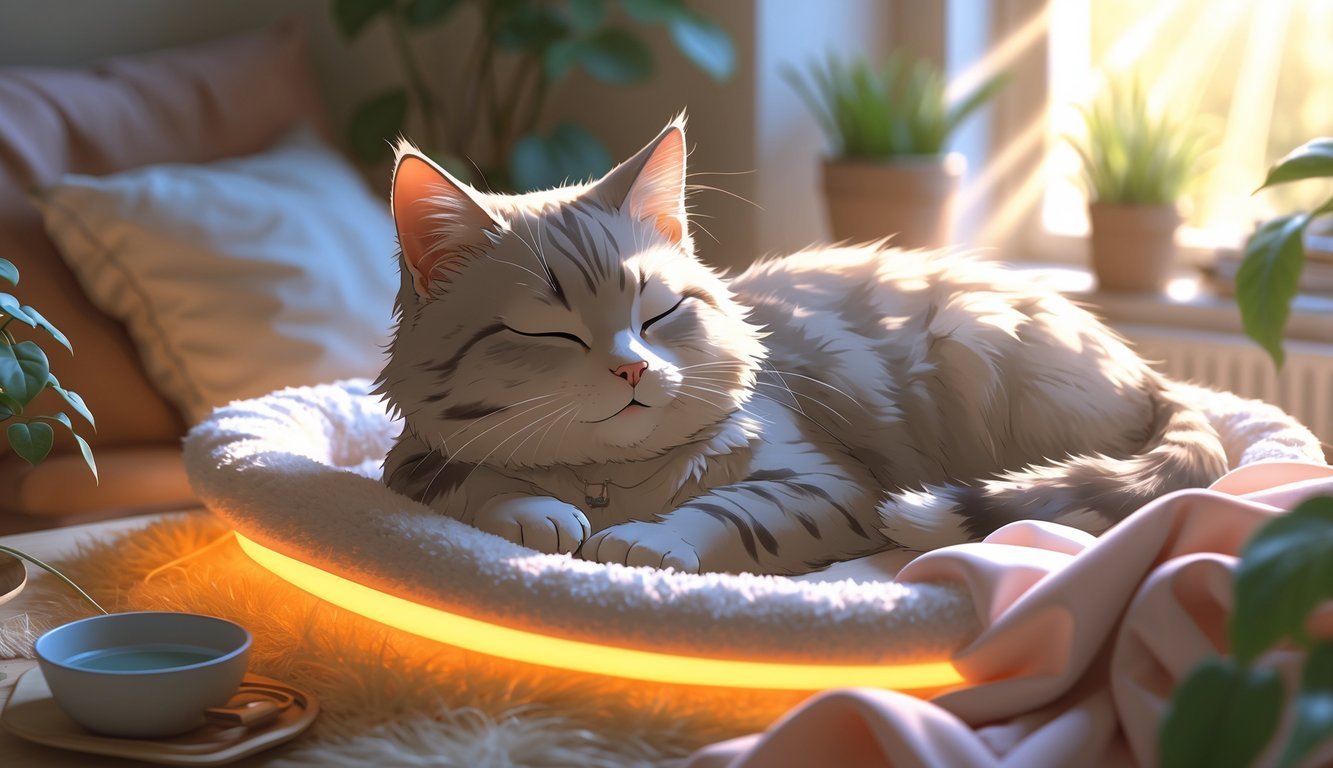
Older cats feel the cold more than they used to. A heated cat bed can help your senior cat stay warm and relaxed, especially when it’s chilly.
Warmth soothes stiff joints and muscles. You can pick from electric heated beds or self-warming beds that reflect your cat’s body heat.
Both options give gentle warmth without getting too hot. Most heated beds are built to be safe for long-term use.
Go for a bed with soft, supportive padding. Memory foam or orthopedic beds ease pressure on sore joints.
A removable cover makes cleaning way easier, which keeps things fresh. Put the bed somewhere quiet and draft-free where your cat already likes to nap.
That way, it’s inviting and your cat will probably use it every day. Adding a heated bed gives your senior cat a cozy spot that supports comfort and well-being.
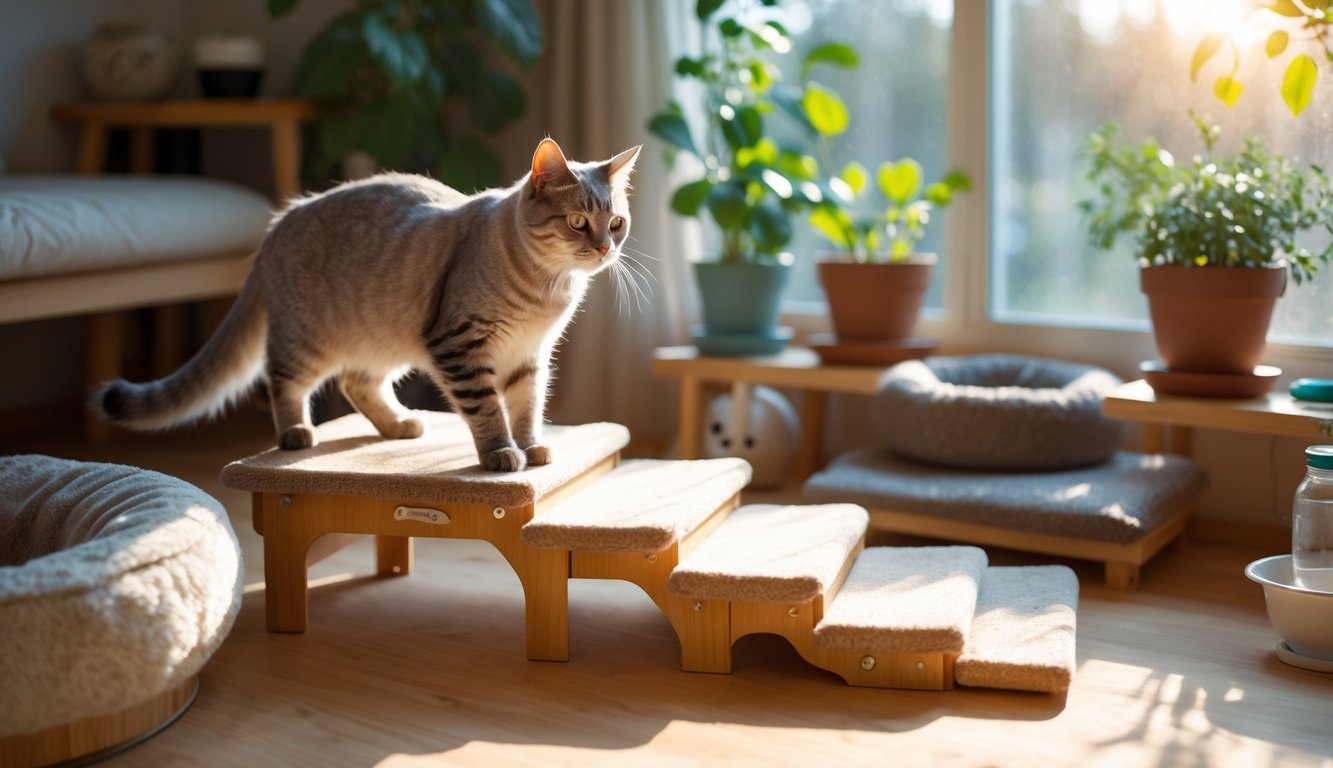
Jumping onto beds, couches, or window sills gets tough for older cats. If it hurts, they might just skip their favorite spots.
Ramps or steps give your cat a safe way to keep enjoying those places. You can choose pet steps if your cat still climbs but doesn’t jump so well.
Ramps work better for cats with stiff joints or arthritis—they’re just easier to use. Place ramps or steps where your cat hangs out most: beds, couches, or sunny windows.
Make sure they’re stable and slip-free so your cat feels safe. Some cats need a little encouragement at first.
Try guiding them with treats or gentle praise until they get the hang of it. Once they’re used to it, they’ll use the ramp or steps on their own.
These small changes help your cat stay independent. They get to keep reaching their favorite spots without strain, which keeps them happier and more relaxed.
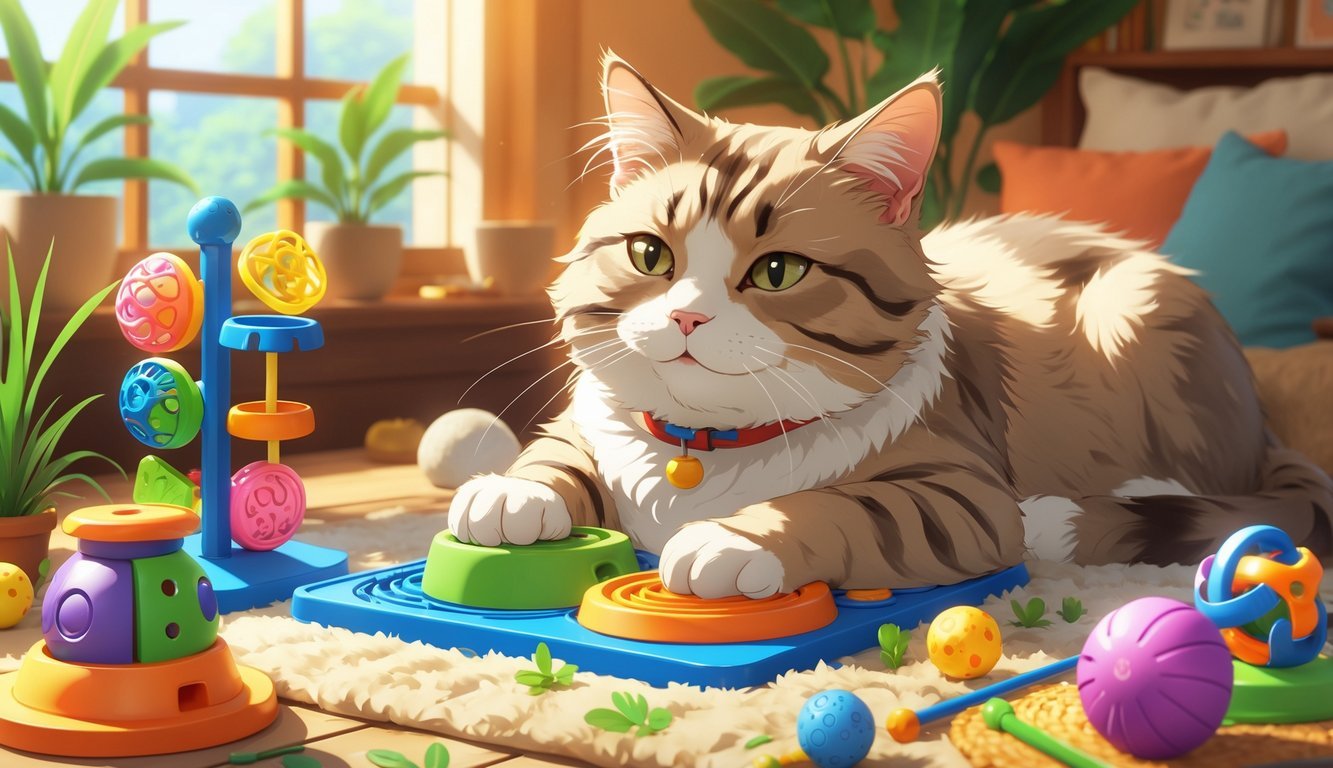
Senior cats still need playtime, even if they’re not as quick as they once were. Interactive toys give gentle exercise and keep their minds sharp.
They also help prevent boredom, which can lead to stress or troublemaking. Choose toys that match your cat’s energy level.
Wand toys, puzzle feeders, or slow-moving battery toys work well. These toys encourage problem-solving and let your cat play at their own pace.
Switching up toys now and then keeps things interesting. If you stash some away and bring them out later, your cat will stay curious.
This trick keeps their routine fresh without overwhelming them. Interactive play also strengthens your bond.
Spending a few minutes each day with a toy gives your cat both mental and social enrichment. Even short sessions can really brighten their day.
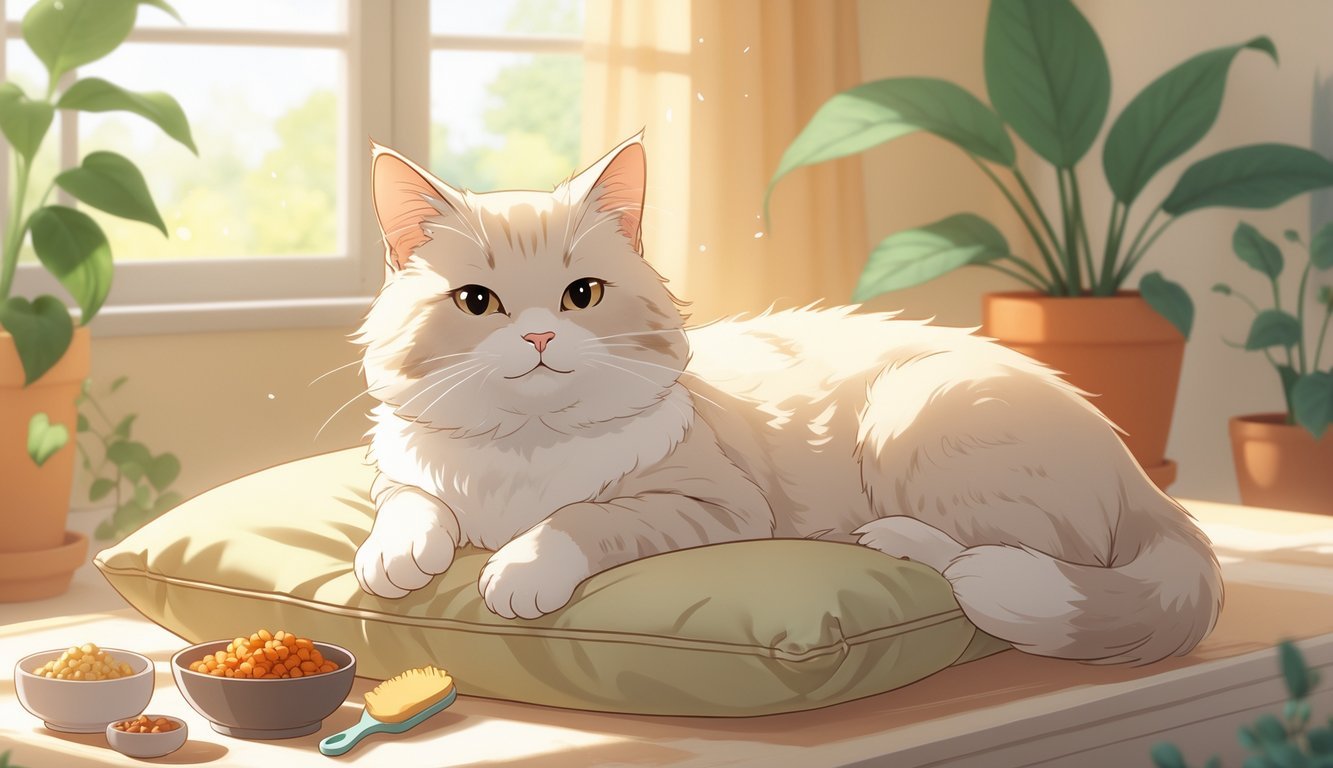
Older cats just can’t groom themselves like they used to. They might miss spots, which leads to mats, greasy fur, or even irritated skin.
By brushing them often, you help keep their coat clean and comfy. Use a soft brush or grooming mitt so you don’t pull on their skin.
Short, gentle sessions are best, since older cats tire out quickly. Brushing also spreads natural oils, which keeps fur healthier.
Regular grooming lets you spot changes in their skin. You might notice dryness, bumps, or sore spots that need attention.
Catching these early gives you a chance to talk to your vet before things get worse. Don’t forget nail care.
Senior cats often don’t wear down their nails, so trimming helps avoid overgrowth and discomfort. Grooming time can also bring you closer.
Your gentle touch reassures your cat and helps them feel cared for.
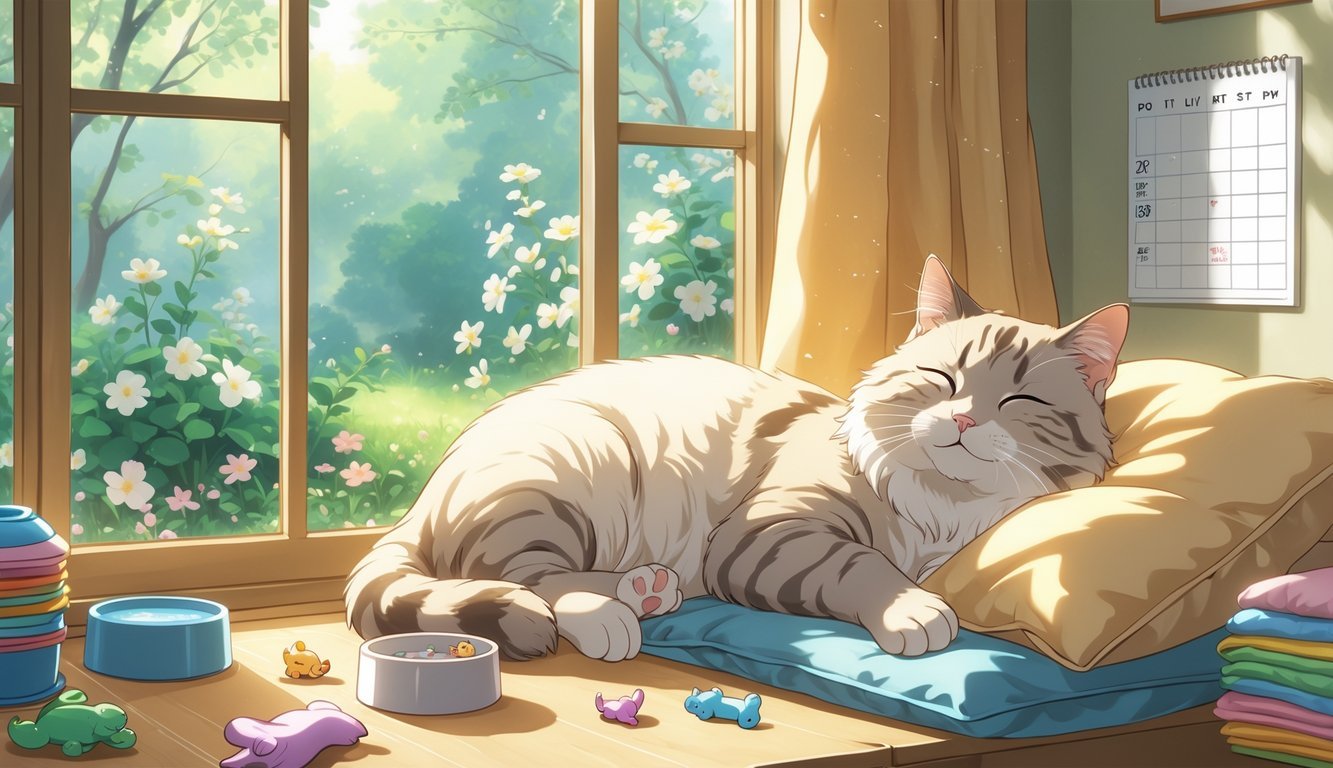
Senior cats feel safer when life is predictable. A steady schedule for meals, play, and rest helps them know what’s coming each day.
This lowers stress and makes their world feel secure. Feeding at the same times daily supports digestion and comfort.
Older cats often don’t handle changes well, so keeping their food routine stable can prevent anxiety or picky eating. Playtime and gentle interaction work best on a schedule too.
Even short sessions of play or brushing at regular times give your cat something to look forward to. Bedtime matters as well.
Cats like winding down in a calm, familiar spot. Encouraging a quiet evening routine can help your cat settle and sleep better.
By keeping daily habits steady, you help your cat adjust to the changes that come with age. It sounds simple, but this consistency can make their days a lot easier.
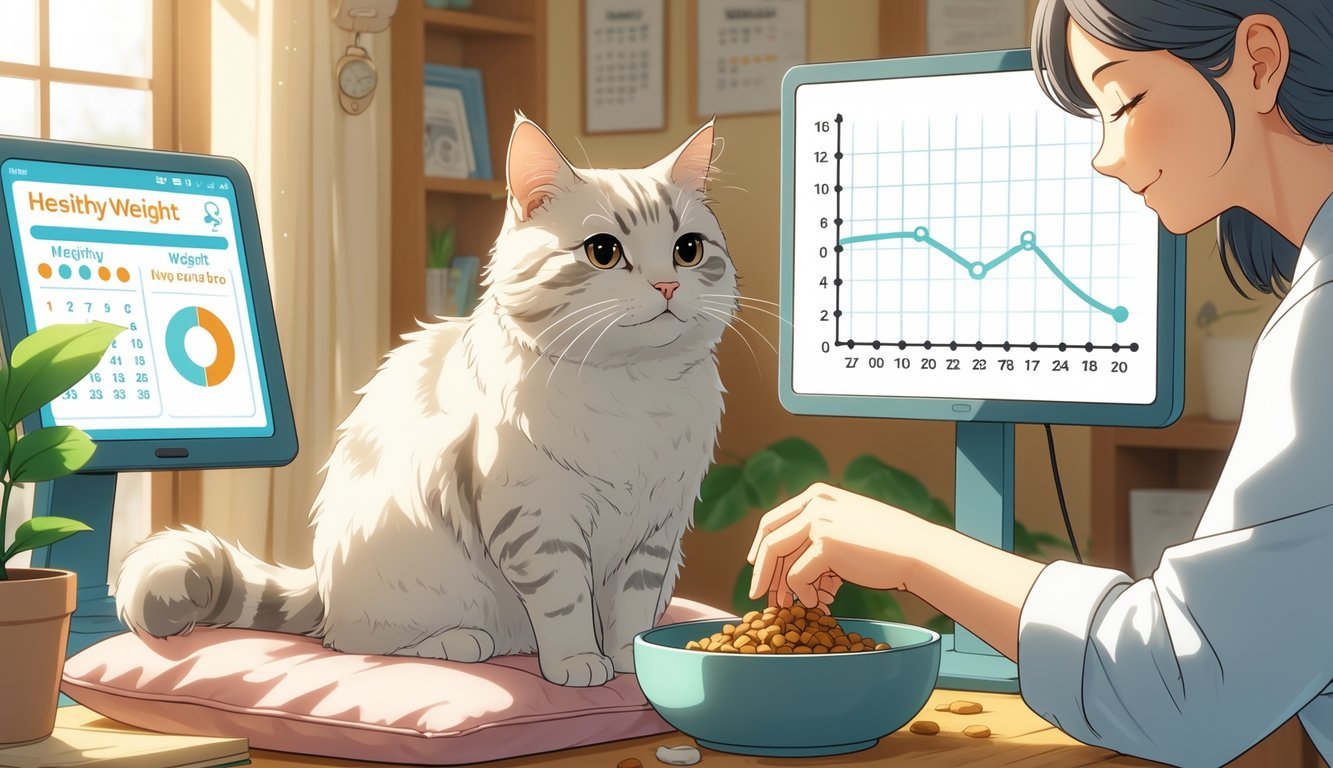
Your senior cat’s weight says a lot about their health. Too much weight strains joints and organs, while weight loss could mean illness or poor nutrition.
Keep an eye on changes so you can act early. Try weighing your cat at home, or ask your vet to do it during check-ups.
Even small changes matter. Jot down the numbers so you can spot trends.
Adjust food portions based on activity and body condition. If your cat is slowing down, they probably need fewer calories.
If they’re losing weight, you might need to bump up portions or try a more calorie-rich food. Senior cats usually do better with smaller, more frequent meals.
It’s easier for them to digest and absorb nutrients this way. Avoid free-feeding, since it often leads to overeating and weight gain.
If you notice sudden changes in weight or appetite, call your vet. Sometimes these shifts signal health problems that need attention.
Regular monitoring and small tweaks help keep your cat comfortable and healthy.
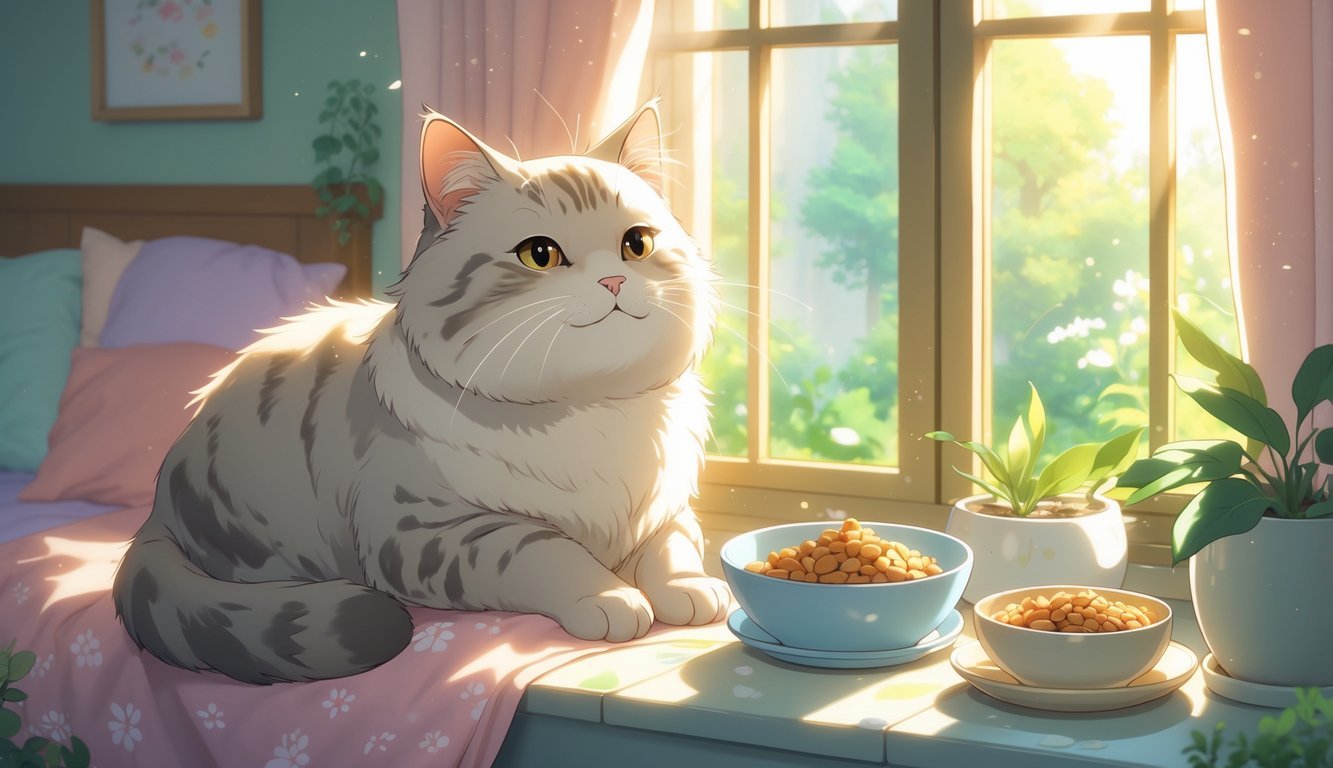
As your cat gets older, their body and behavior shift in ways that can affect daily life. Paying attention to these changes helps you keep them comfortable and healthy for as long as possible.
Most cats reach “senior” status around age 10 or 11, though some show signs sooner. At this point, you might notice slower movement, less play, and longer naps.
These changes are normal, but still worth watching. Older cats often develop conditions like arthritis, kidney disease, or dental problems.
Joints can stiffen, making jumping or climbing tough. Teeth and gums might get sensitive, so eating habits could change.
Weight shifts are common too. Some cats gain weight from less activity, while others lose weight because of health issues.
Regular checkups help you keep track. Your cat’s senses might fade over time.
Hearing loss, weaker vision, and a duller sense of smell can change how they interact with their world. Simple tweaks, like keeping food and water easy to reach, can make daily life a bit smoother.
Older cats go through changes, but not every shift is just aging. Some signs actually mean your cat needs to see the vet.
Pay attention to how much your cat eats or drinks. If your cat suddenly drinks more than usual, that could hint at kidney disease or even diabetes. Eating less? Dental pain or tummy troubles might be to blame.
Notice any mobility issues like limping, stiffness, or not wanting to jump up. These usually point to arthritis or joint pain.
Here are a few other red flags:
Catching these things early gives your cat a better shot at staying happy and healthy.
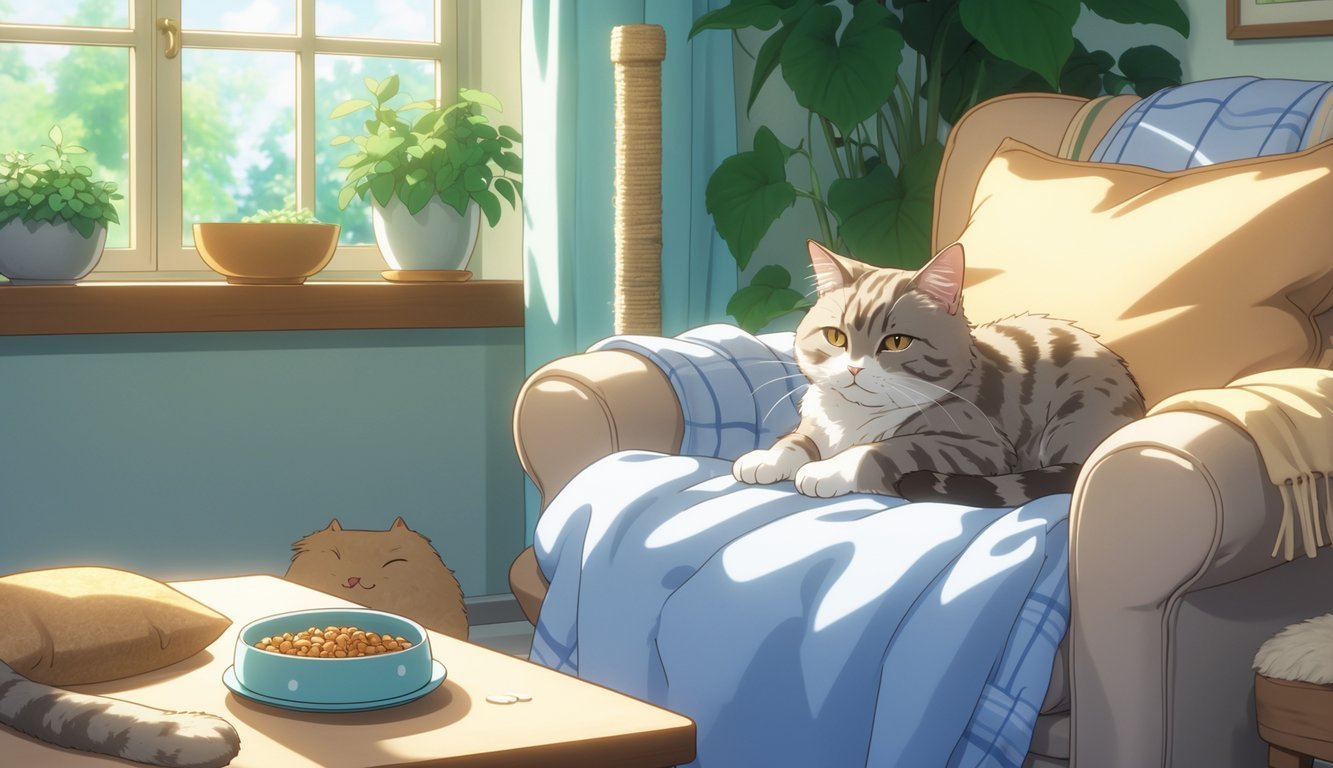
Your older cat might move slower, and their vision or hearing may not be what it used to be. Even little tweaks around your house can make a huge difference for them.
A calm, safe, and cozy spot helps them feel at ease as they get older.
Senior cats often deal with stiff joints. Try adding ramps or pet stairs beside beds, couches, or windowsills. This way, your cat can still reach their favorite places without painful jumps.
Give them soft, comfy bedding in quiet corners. Orthopedic beds or thick blankets cushion sore spots. Keep these cozy areas warm and away from drafts—older cats get cold more easily.
Make the litter box easy to use. Pick one with low sides so stepping in isn’t a chore. If you have stairs, put boxes on each floor to save your cat extra effort.
Keep food and water near their favorite hangouts so they don’t have to climb. Raised bowls can also help ease the strain on their neck and back.
Senior cats really notice changes around them. Loud noises, a new pet, or even just moving the furniture can throw them off balance. I’d suggest sticking to a routine as much as possible—it just makes life easier for them.
Give your cat a few cozy hiding spots. A covered bed or a quiet little corner works wonders when they need to escape for a bit. It’s all about letting them feel like they’re in charge of their space.
Play still matters, but you’ll want to keep it mellow. Soft toys or slow-moving wands are usually best. Short, gentle play sessions can actually help with anxiety and keep their mind sharp.
If your cat still seems on edge, calming aids might help. You could try pheromone diffusers, calming sprays, or even some soft background music. These little touches can make your home feel much more peaceful for your cat.